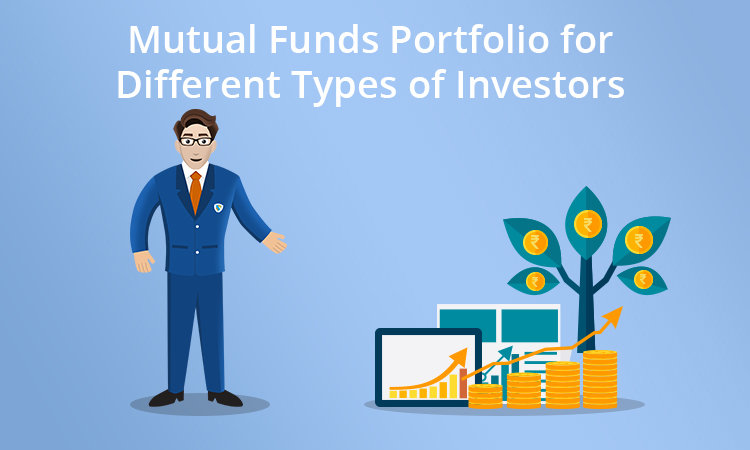Learn About Mutual Funds Portfolio for Different Types of Investors?

Mutual funds are said to be new age investment which provides flexibility and gives more options to invest for the investors. Mutual funds benefit the investor to spread out the investment horizon by providing various mutual fund types which are based on financial goals, whether they are long term or short term.
There are few mutual fund categories which walk into most portfolios as they fulfil the basic investment requirements which people seek to meet. The latest alliance of schemes administered by market regulator Securities and Exchange Board of India and the instruction of exposure that every category can take to various asset classes and also sub-asset classes has made it even more simple for the investors to know about the risks and returns from the mutual fund schemes and their suitability to fit their requirements.
Different investment strategies for investors having different mutual funds portfolio are:
1) Equity Funds
These funds target to grow faster than fixed income funds or money market. So usually there is a great risk that you might lose money. These funds generally invest in stocks. You can select from various types of equity funds which comprise of those which specialize in the growth of stocks, income funds, value stocks, mid-cap stocks, large-cap stocks, small-cap stocks, or maybe a blend of these.
2) Balanced Funds
These funds invest in a blend of both equities and the fixed income securities. The aim of achieving maximum returns against the plunge of losing money is by creating this balance. Mostly balanced funds pursue a formula to divide the money among the various sorts of investments. They are said to have even more risk as compared to the fixed income funds. On the other hand, they have less risk than the pure equity funds.
3) Fixed Income Funds
These funds purchase investments which pay a locked rate of return such as government bonds, corporate bonds, investment-grade and also high-yield corporate bonds. Their target is to have revenue coming into the funds on a continuous basis, majorly by the interest which the fund earns. Also, high-yield corporate bond funds are usually riskier than the government funds.
Portfolio for investors with a high-risk profile
When your mutual fund investment provides you with a great rate of return in a short span of time, investors should understand that their investment is under risk. You should always give enough time, as there are many investments which have the probability to double the principal amount. But there are many mutual fund investment strategies which can double up your amount, such as:
High Yield Mutual Funds
Whether they are issued by a high-debt company or foreign government, high yield funds offer investors excellent returns in exchange for the probable loss of principal. Investors should be well aware that a high yield funds giving 15- 20% may be junk and the starting consideration that multiple chances of reinvestment would double a principal should always be tested against the probability for a complete loss of investment dollars.
Portfolio for Investors with moderate risk-taking ability who want to invest in stable large-cap funds
If we look at the risk-return factor, large-cap funds are said to be the safest amongst the equity funds. If you have the capacity for comparatively high risk, you might skew the equity portfolio to the large-cap mutual fund strategies. As, when the equity markets switch turbulent, a large-cap fund can capture the downside risk in a better way as compared to the mid-cap counterparts and also the large & mid-cap peers. Therefore, large-cap mutual funds are good for you if you want relatively stable market returns and also have an investment time of at least 5 years.
Portfolio for Investors who want a balanced mix of debt and equity
This fund is more suitable for investors who want a blend of income, capital appreciation and safety. But the risk involved in balanced funds is low than that of full 100% equity funds, because to a portion of the portfolio allocated towards debt, the returns would be less as compared to the equity funds in equity bull market.
Investors who don't want to risk their money in equities
For people who do not want to risk their money in equities, should make sure that they make best mutual fund investment strategies so that they are at less risk. They should consider an appropriate mix of investments, draw a personal financial layout, evaluate their comfort zone of taking a risk, create and maintain a proper emergency fund and consider rebalancing the portfolio occasionally.
Investors who want to generate stable income after retirement
As retirement for many means end of earning, so they should invest in something which has less risk and has regular fixed return such as mutual fund retirement plans, tax saving options available with SIP options, etc.
Conclusion
These are the mutual funds modal portfolio for different types of investors. Investors are always advised to consult a financial planner to build the best portfolio as per his or her risk taking capability.